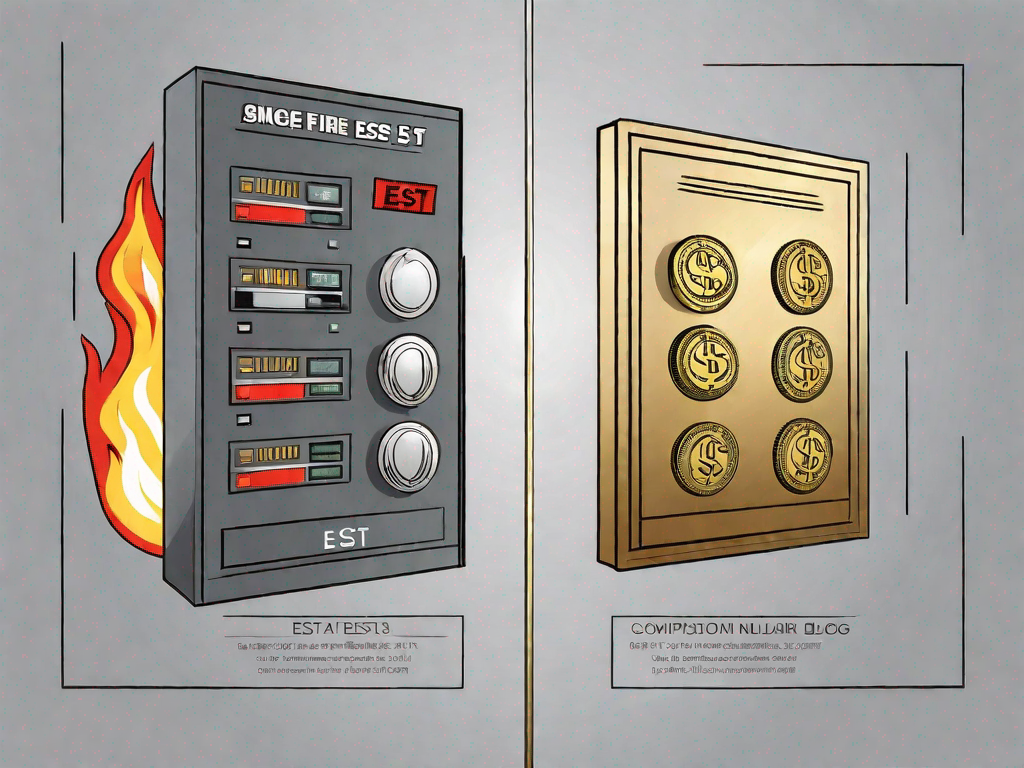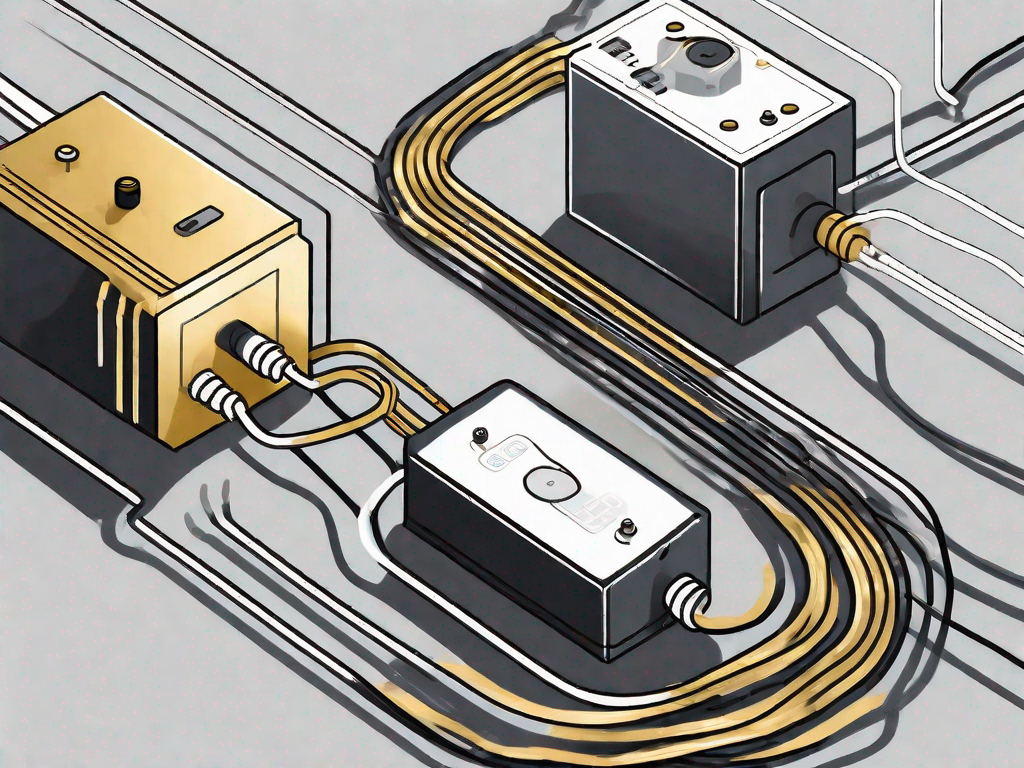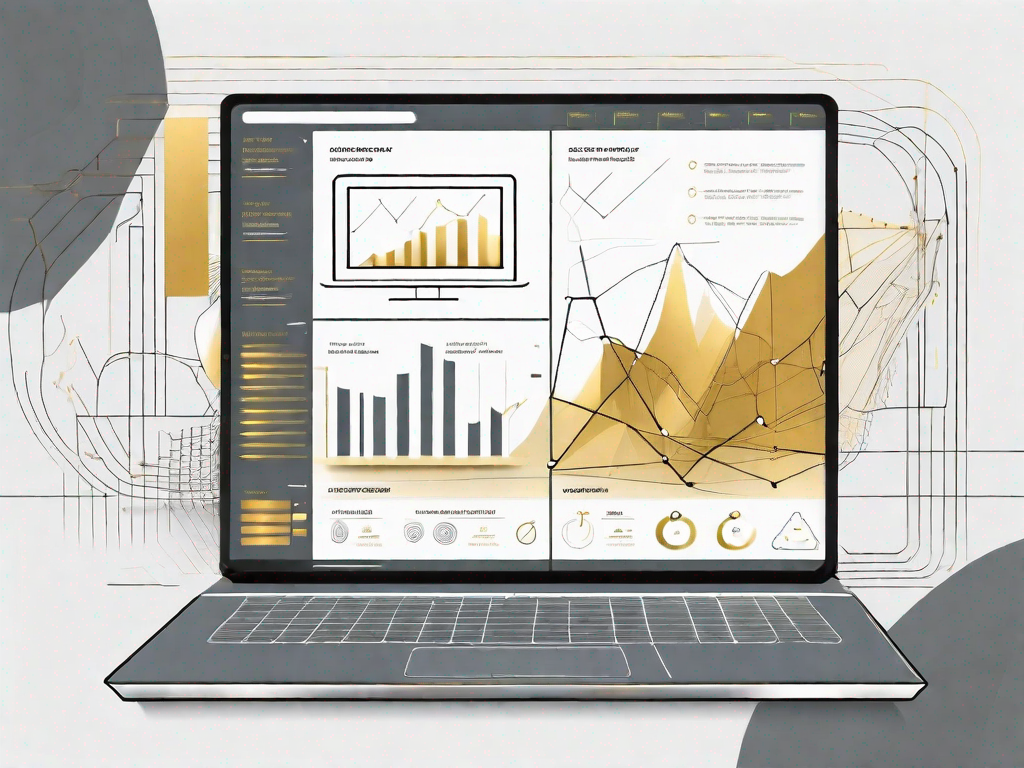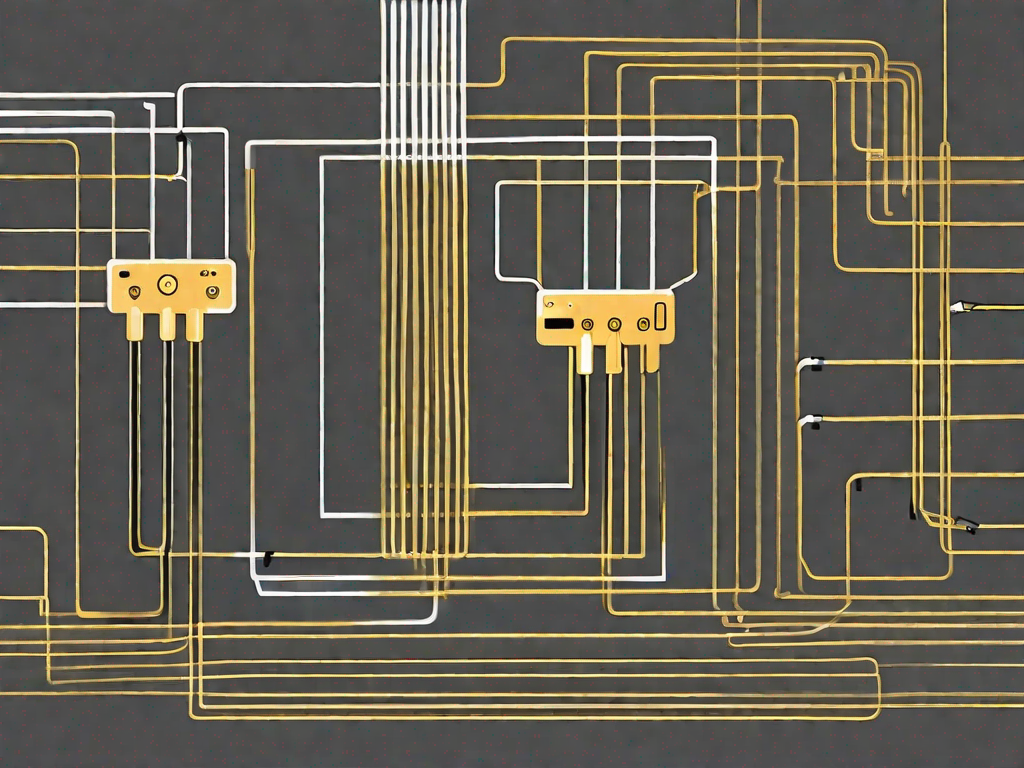
Cost analysis: EST3 vs. EST4
In today’s ever-evolving world of technology, staying up-to-date with the latest advancements is crucial for businesses to thrive. This is particularly true in the field of emergency communication systems, where the need for efficient and reliable solutions cannot be understated. One such consideration in this realm is the comparison between two popular options: EST3 and EST4. In this article, we will conduct a comprehensive cost analysis of these two systems, delving into various aspects to determine which one offers better value for businesses seeking a long-term solution.
Understanding EST3 and EST4
Before delving into the cost aspect, it’s essential to have a clear understanding of what EST3 and EST4 entail, as well as their respective features.
Key Features of EST3
EST3 is a sophisticated emergency communication system renowned for its reliability and flexibility. It features advanced technology, including a centralized control panel, comprehensive audio capabilities, and integration with various emergency devices.
One of the standout features of EST3 is its centralized control panel, which allows for easy monitoring and control of the entire emergency communication system. This centralized approach ensures efficient coordination during emergencies, as all critical information and controls are easily accessible from a single location.
In terms of audio capabilities, EST3 offers comprehensive options for both emergency announcements and background music. The system can deliver clear and intelligible messages throughout a facility, ensuring that important information is effectively communicated to all occupants.
EST3 also excels in its integration with various emergency devices, such as fire alarms, smoke detectors, and security systems. This integration enables seamless communication and coordination between different systems, enhancing overall safety and response times.
Furthermore, EST3 seamlessly integrates with building management systems, allowing for efficient coordination during emergencies. This integration enables the emergency communication system to work in tandem with other building systems, such as HVAC and access control, to ensure a comprehensive and coordinated response.
Key Features of EST4
Similar to EST3, EST4 is also a cutting-edge emergency communication system that offers a wide range of features to improve overall safety and communication.
One of the standout features of EST4 is its intuitive touchscreen interface. The user-friendly interface makes it easy for operators to navigate and control the system, reducing the learning curve and potential for errors. The touchscreen interface also provides real-time status updates and visual feedback, enhancing situational awareness.
EST4 also offers customizable zone controls, allowing users to divide a facility into specific areas and assign different emergency communication settings to each zone. This flexibility enables tailored emergency response strategies based on the unique needs and layout of a facility.
In terms of notification options, EST4 provides advanced capabilities, including text messaging, email alerts, and mobile app notifications. These options ensure that emergency information reaches occupants through multiple channels, increasing the likelihood of timely and effective response.
Furthermore, EST4 boasts enhanced scalability, making it suitable for facilities of all sizes. Whether it’s a small office building or a sprawling campus, EST4 can be easily expanded and adapted to meet the evolving needs of a growing organization.
Lastly, EST4 is compatible with modern communication protocols, ensuring seamless integration with other systems and devices. This compatibility allows for easy integration with existing infrastructure, minimizing the need for extensive rewiring or system replacements.
By understanding the key features of EST3 and EST4, businesses can make informed decisions about which emergency communication system best suits their needs. Both systems offer advanced technology and a wide range of capabilities to enhance overall safety and communication within a facility.
Initial Purchase Price: EST3 vs. EST4
When considering the initial purchase price, it’s important to evaluate not only the cost of the systems themselves but also any additional accessories or installation fees.
Choosing the right fire alarm system for your business requires careful consideration of various factors, including the initial purchase price. Two popular options in the market are EST3 and EST4. Let’s take a closer look at the breakdown of their pricing to help you make an informed decision.
Breakdown of EST3 Pricing
Compared to EST4, EST3 generally has a lower upfront cost. The system’s components, such as control panels, audio equipment, and devices, usually come at a more budget-friendly price point.
However, it’s crucial to consider the specific requirements of your business and any customization needs that may affect the overall cost. For example, if your facility has complex layouts or unique architectural features, additional devices or specialized equipment may be necessary, potentially increasing the overall cost.
Furthermore, installation fees should be taken into account. While EST3 is known for its relatively straightforward installation process, it’s still important to factor in any professional installation costs that may arise.
Despite these considerations, EST3 remains an attractive option for businesses looking for a reliable fire alarm system at a competitive price.
Breakdown of EST4 Pricing
On the other hand, EST4 tends to have a slightly higher initial purchase price. The advanced features and technological capabilities incorporated into the system contribute to its higher price point.
Businesses opting for EST4 should consider the long-term benefits and potential cost savings provided by these additional features. For instance, EST4 offers enhanced monitoring capabilities, advanced detection algorithms, and improved integration with other building management systems. These features can help streamline operations, improve response times, and potentially reduce maintenance costs in the long run.
Moreover, it’s important to note that the higher initial purchase price of EST4 may be offset by potential insurance premium reductions. Many insurance providers offer discounts for businesses that have state-of-the-art fire alarm systems installed, as they are seen as a proactive measure to mitigate risks.
When evaluating the pricing of EST4, it’s also essential to consider any additional accessories or optional components that may be required for your specific needs. These could include specialized sensors, voice evacuation systems, or remote monitoring capabilities.
Ultimately, the decision between EST3 and EST4 should be based on a comprehensive evaluation of your business requirements, budget, and long-term goals. By considering the initial purchase price alongside the features, capabilities, and potential cost savings, you can make an informed choice that best suits your needs.
Maintenance Costs for EST3 and EST4
Effective maintenance is essential for the longevity and optimal performance of any emergency communication system. Let’s explore the regular maintenance requirements for both EST3 and EST4.
Regular Maintenance for EST3
EST3’s regular maintenance typically includes tasks such as routine inspections, firmware updates, and testing of devices and communication pathways. These maintenance activities are crucial to ensure that the system operates smoothly and reliably during emergencies.
During routine inspections, technicians thoroughly examine the EST3 system, checking for any signs of wear and tear, loose connections, or potential issues that may affect its performance. They also inspect the devices connected to the system, such as fire alarm panels, speakers, and control modules, to ensure they are functioning correctly.
In addition to inspections, firmware updates are an essential part of EST3 maintenance. These updates provide bug fixes, security patches, and performance enhancements to keep the system up to date with the latest technology and industry standards. Technicians carefully install these updates, ensuring compatibility and minimizing any potential disruptions to the system.
Another crucial aspect of EST3 maintenance is testing the devices and communication pathways. Technicians simulate emergency scenarios to verify that the system responds appropriately. They check the functionality of devices, such as smoke detectors and manual call points, to ensure they trigger the necessary alarms and notifications. Communication pathways, including network connections and backup systems, are also tested to guarantee seamless communication during emergencies.
While the cost of these maintenance activities can vary depending on the system’s size and complexity, businesses can generally expect manageable maintenance costs for EST3. The benefits of regular maintenance far outweigh the expenses, as it helps prevent system failures, reduces downtime, and ensures compliance with safety regulations.
Regular Maintenance for EST4
Similar to EST3, EST4 also requires periodic maintenance to ensure seamless operation. Businesses utilizing EST4 should allocate a budget for tasks such as system checks, software updates, and equipment calibration.
System checks involve a comprehensive evaluation of the EST4 system, similar to the inspections performed for EST3. Technicians meticulously examine the system components, including control panels, annunciators, and emergency communication devices, to identify any potential issues or malfunctions. They also assess the integrity of the system’s power supply and backup systems, ensuring they are ready to provide uninterrupted operation during emergencies.
Software updates play a crucial role in maintaining EST4’s performance and security. Just like EST3, EST4 receives regular firmware updates that address software bugs, enhance functionality, and improve compatibility with other systems. Technicians carefully install these updates, ensuring a smooth transition and minimal disruption to the system’s operation.
Equipment calibration is another important aspect of EST4 maintenance. Calibration ensures that the system’s sensors, detectors, and other devices are accurately measuring and detecting emergency situations. Technicians use specialized tools and techniques to calibrate the devices, ensuring their reliability and accuracy.
Although the maintenance costs for EST4 might be slightly higher compared to EST3, the system’s advanced features and enhanced capabilities often justify the expense. EST4 offers additional functionalities, such as integrated voice evacuation, advanced event management, and enhanced network connectivity, which require specialized maintenance to ensure their optimal performance.
By investing in regular maintenance for both EST3 and EST4, businesses can ensure that their emergency communication systems are always in top condition, ready to protect lives and property during critical situations.
Potential Repair Costs
Despite the reliability of both EST3 and EST4, unforeseen issues or damages can occur, necessitating repairs. Let’s discuss the potential repair costs associated with these systems.
When it comes to maintaining an optimized EST3 system, businesses should be prepared for potential repair costs. Typical repairs for EST3 may involve component replacements, troubleshooting of communication pathways, or addressing issues with audio equipment. These repairs are essential to ensure the smooth functioning of the system and to maintain a high level of safety and security.
The costs for repairs can vary depending on the severity of the problem. Minor repairs, such as replacing a faulty component, may be relatively inexpensive. However, more complex issues that require extensive troubleshooting or the replacement of multiple components can result in higher repair costs. It is important for businesses to budget for these potential expenses to ensure the continued reliability of their EST3 system.
Common EST3 Repairs and Costs
Let’s take a closer look at some of the common repairs and associated costs for EST3 systems:
- Component Replacements: Over time, certain components of the EST3 system may wear out or become damaged. This can include items like control panels, detectors, or wiring. The cost of replacing these components can vary depending on the specific part and the complexity of the installation process.
- Troubleshooting Communication Pathways: Communication pathways are crucial for the proper functioning of the EST3 system. If there are issues with the communication pathways, it can lead to a loss of connectivity and compromised system performance. Troubleshooting these pathways can involve identifying and resolving issues with network connections, wiring, or software configurations. The costs for troubleshooting can vary depending on the time and expertise required to diagnose and fix the problem.
- Addressing Issues with Audio Equipment: The audio equipment in an EST3 system plays a vital role in alerting occupants in case of emergencies. If there are issues with speakers, amplifiers, or other audio devices, it can affect the system’s ability to effectively communicate important messages. Repairing or replacing faulty audio equipment can involve costs for parts and labor.
It is important for businesses to work with experienced technicians or service providers who specialize in EST3 systems to ensure that repairs are carried out efficiently and effectively.
Common EST4 Repairs and Costs
With its more advanced features and intricate design, EST4 might have higher repair costs compared to EST3. However, it’s important to note that the long-term benefits and improved reliability offered by EST4 often offset the potential repair expenses.
EST4 systems are designed to provide enhanced functionality and performance, offering businesses a higher level of safety and security. However, due to their complexity, repairs for EST4 systems may require more specialized knowledge and expertise, which can contribute to higher repair costs.
Regular maintenance and prompt troubleshooting can help minimize the occurrence of significant repair issues with EST4 systems. By conducting routine inspections, businesses can identify and address any potential problems before they escalate into more costly repairs. Additionally, staying up-to-date with software updates and system upgrades can help optimize the performance of the EST4 system and reduce the likelihood of major repairs.
When it comes to estimating repair costs for EST4 systems, it is important to consider factors such as the specific components that may need repair or replacement, the complexity of the system, and the expertise required to carry out the repairs. By working closely with experienced technicians or service providers, businesses can ensure that their EST4 system is well-maintained and any necessary repairs are carried out efficiently.
Long-Term Value: EST3 vs. EST4
When considering the long-term value, it’s crucial to assess factors such as system lifespan, scalability, and potential resale value.
Emergency communication systems play a vital role in ensuring the safety and security of businesses and organizations. As technology continues to evolve, it becomes essential to choose a system that not only meets current needs but also provides long-term value.
EST3’s Lifespan and Resale Value
A well-maintained EST3 system can serve businesses reliably for an extended period. The durability and robustness of this system make it a popular choice for many organizations. However, it’s worth noting that as technology advances, the resale value of EST3 might gradually decrease.
Despite this potential decrease in resale value, the EST3 system still offers significant benefits. Its proven track record and reliability make it a trusted choice for emergency communication. The system’s compatibility with various building infrastructures ensures seamless integration, providing peace of mind to businesses and organizations.
Additionally, the EST3 system’s flexibility allows for customization and expansion as needs evolve over time. This adaptability ensures that businesses can continue to rely on the system, even as their requirements change.
EST4’s Lifespan and Resale Value
With its advanced features and adaptability, EST4 offers a longer lifespan compared to EST3. The upgradability and scalability of EST4 also contribute to its enhanced long-term value. Organizations that invest in the EST4 system can benefit from its longevity and future-proof design.
Moreover, the resale value of EST4 may be more favorable due to its compatibility with newer communication protocols and the continuous demand for advanced emergency communication systems. As technology progresses, businesses and organizations are constantly seeking more efficient and effective emergency communication solutions. The EST4 system aligns with these evolving needs, making it a desirable option for potential buyers.
Furthermore, the EST4 system’s advanced features, such as improved audio quality and enhanced integration capabilities, provide organizations with a comprehensive emergency communication solution. The system’s ability to integrate with other building systems, such as fire alarms and security systems, further enhances its value and functionality.
In conclusion, when evaluating the long-term value of emergency communication systems, factors such as system lifespan, scalability, and potential resale value are crucial considerations. While the EST3 system offers reliability and proven performance, the EST4 system surpasses it in terms of lifespan, adaptability, and potential resale value. Organizations must carefully assess their specific needs and future requirements to make an informed decision that aligns with their long-term goals and objectives.
Final Verdict: Which is More Cost-Effective?
Now that we have examined the various cost aspects of EST3 and EST4, it’s time to weigh the costs and determine which system offers better cost-effectiveness for businesses in the long run.
Weighing the Costs of EST3
EST3 excels in terms of initial purchase price and regular maintenance costs, making it a more cost-conscious choice for businesses operating within constrained budgets. However, businesses should consider the potential limitations of the system’s lifespan, potential repair costs, and future resale value when evaluating its overall cost-effectiveness.
Weighing the Costs of EST4
While EST4 may have a higher initial purchase price and slightly greater maintenance costs, its advanced features, longer lifespan, and potentially superior resale value make it a worthy investment for businesses seeking a reliable and technologically advanced emergency communication system. The enhanced functionalities and potential long-term savings associated with EST4 must be carefully weighed against the upfront costs.
In conclusion, the cost analysis of EST3 vs. EST4 reveals that the selection depends on the specific needs and priorities of each business. While EST3 may be a more budget-friendly option with manageable maintenance costs, EST4’s advanced features and long-term value position it as the more cost-effective choice for businesses seeking optimal performance and future scalability. Understanding your business’s requirements and budget constraints will ultimately help determine the ideal emergency communication system for your organization.


